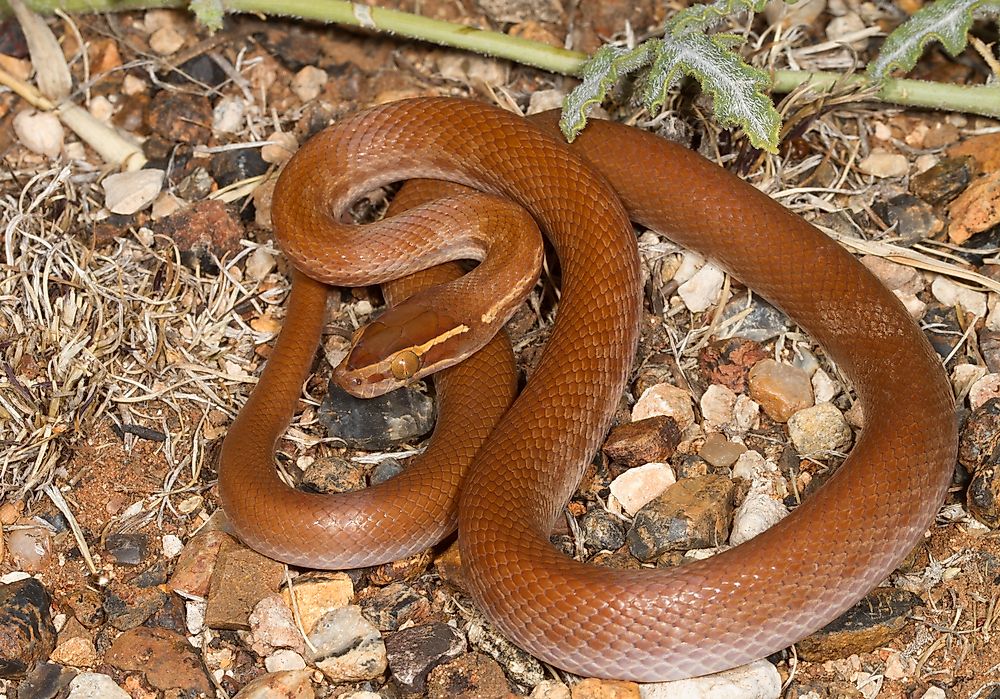Native Reptiles Of Mozambique

Mozambique is one of Africa’s most diverse countries with more than 4271 terrestrial animals out of which about 170 are reptiles. Out of these reptiles, seven species are endemic to the equally diverse habitats of Mozambique. These reptiles are mainly found in close interaction with human beings where they seek food. The non-poisonous reptiles are exploited both locally and internationally for pet trade, a trend which has threatened their existence.
Native Reptiles Of Mozambique
Berg adder (Bitis atropos)
The berg adder is classified as least concern venomous viper endemic to southern Africa. The adder’s habitats are mainly mountainous regions with high precipitation, montane grasslands, and rocky hillsides. The adder feeds on lizards, small amphibians, rodents, and ground nesting birds.
Emperor flat lizard (Platysaurus imperator)
The emperor flat lizard is a vulnerable species found in the mesic savanna of north-eastern Zimbabwe and Mozambique, especially on rock boulders. The body colors vary with sex and age with the males having a yellow head, dark red body, whitish anterior spots and black limbs while females and juveniles are black with cream stripes, white throat, and a black belly. The diet is composed of ants, beetles, and grubs. Females lay two clutches of eggs in the summer. The lizard can live for up to 14 years in the wild. Threats to the lizard are mainly over-collection for the pet trade.
Mozambique girded lizard (Smaug mossambicus)
The amphibian is a large, flattened lizard. The lizard occupies rock outcrops in its habitats which are mainly grasslands and dry wooded mountain slopes in Gorongosa and Chimanimani mountains. Their diet is composed of small insects, millipedes, spiders and small vertebrates. Capture for the pet trade is likely to threaten the lizard’s population.
Cape house snake (Boaedon capensis)
The cape house snake is a non-venomous colubrid endemic to most countries of southern Africa. The upper parts of its body are mainly dark brown while some are black, brown or olive green. The body is highly patterned with lateral lines that resemble chain links. Females attain a body length of up to four feet while males reach two and a half feet long. The cape house snake mainly feeds on rodents which it sometimes hunts from homesteads. The snake is found in the sub-Saharan regions of Botswana, South Africa, Mozambique, Zambia, and Zimbabwe.
Threats and Conservation efforts
Mozambican reptiles face threats from the over-collection for the pet trade and rapid destruction of their habitats through human activities. The government has cooperated with other governments in the region in the making and implementation of policies aimed at protecting the biodiversity of the wildlife. Native reptiles including Marshall’s pygmy chameleon, stripped flat lizard, van son’s thick-toed gecko, blue-tailed sand-veld lizard and the Pungwe flat lizard. These conservation efforts will hopefully reduce the impact of threats to the targeted species.
Native Reptiles Of Mozambique
| Native Reptiles of Mozambique | Scientific Name |
|---|---|
| Berg Adder | Bitis atropos |
| Emperor Flat Lizard | Platysaurus imperator |
| Mozambique Girdled Lizard | Smaug mossambicus |
| Cape House Snake | Boaedon capensis |
| Marshall's Pygmy Chameleon | Rhampholeon marshalli |
| Striped Flat Lizard | Platysaurus torquatus |
| Van Son's Thick-Toed Gecko | Pachydactylus vansoni |
| Zambezi Thick-Toed Gecko | Pachydactylus tetensis |
| Blue-Tailed Sandveld Lizard | Nucras caesicaudata |
| Pungwe Flat Lizard | Platysaurus pungweensis |











